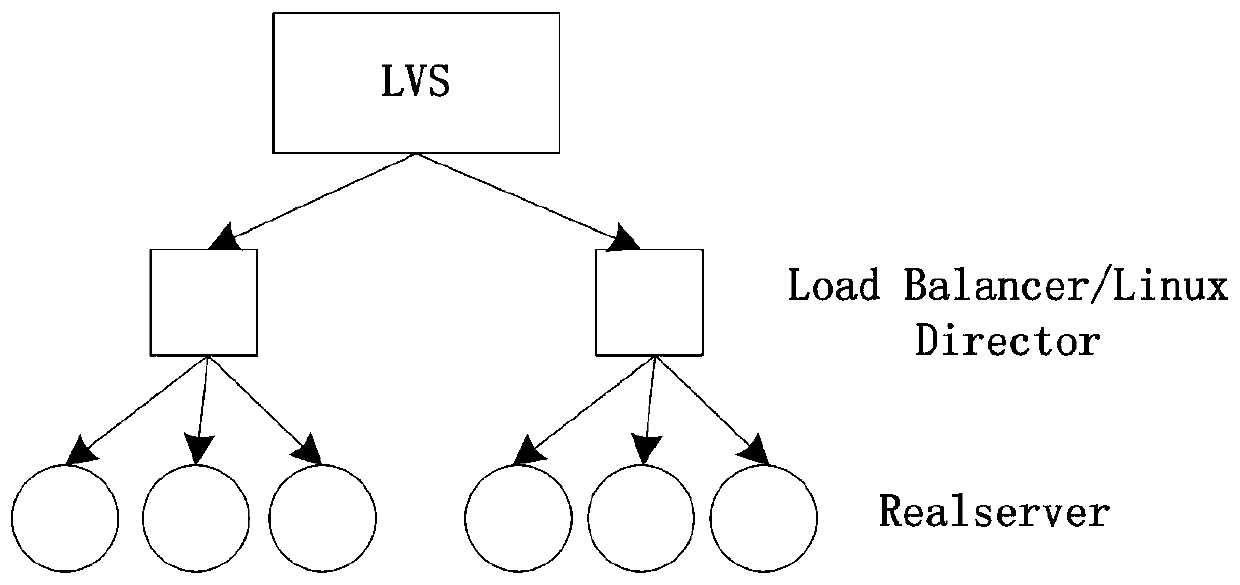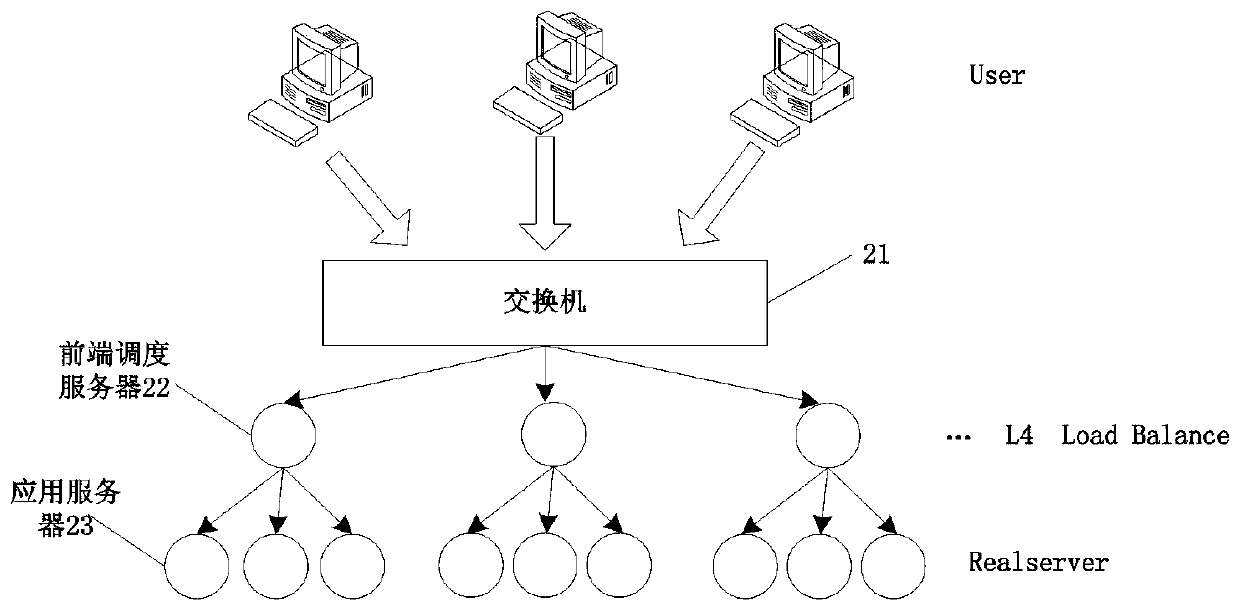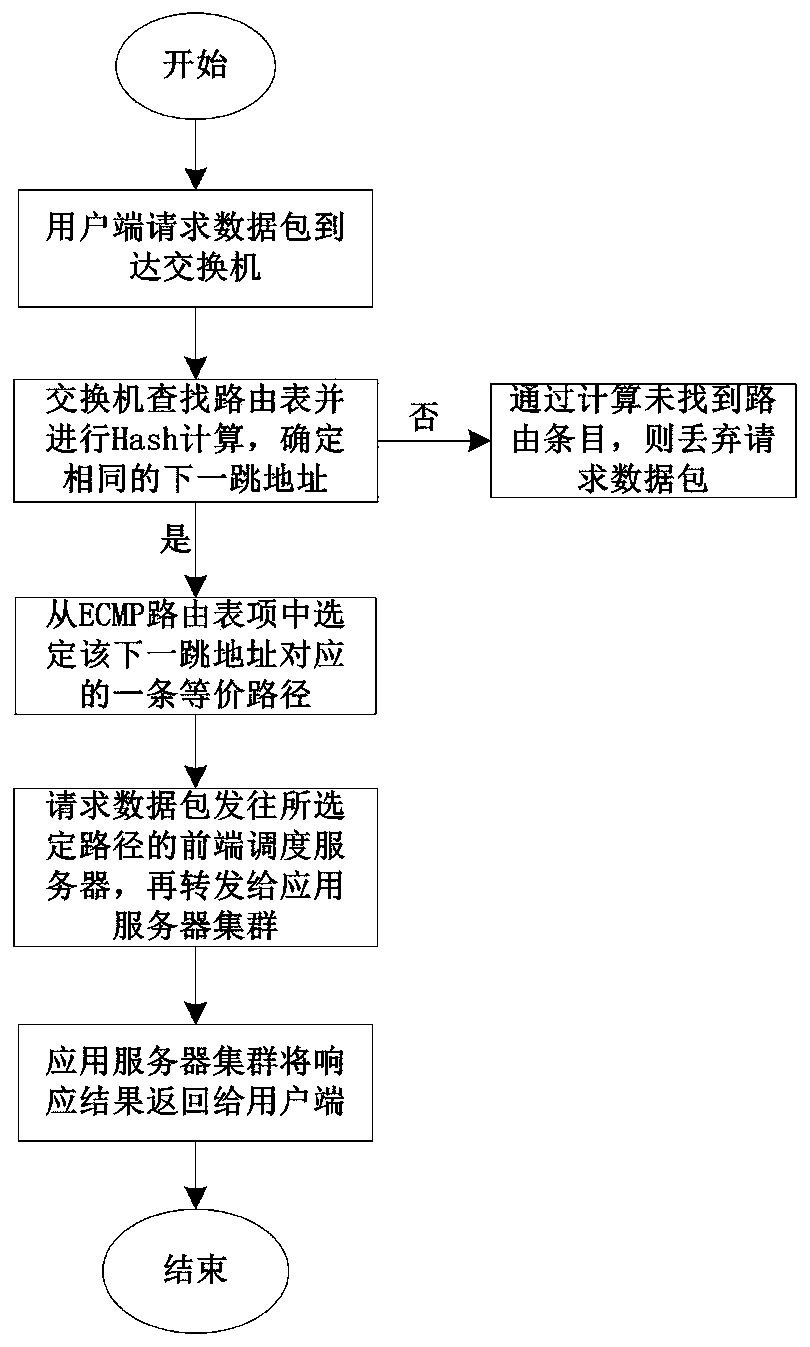A switch-based load balancing system and method
A load balancing and switching technology, applied in the field of network communication, can solve the problems of waste of resources, poor anti-interference ability, poor scalability, etc., to achieve the effect of improving utilization, resisting attacks, and solving excessive load
- Summary
- Abstract
- Description
- Claims
- Application Information
AI Technical Summary
Problems solved by technology
Method used
Image
Examples
Embodiment 1
[0058] The first embodiment of the present invention provides a switch-based load balancing system, such as figure 2 As shown, it is a schematic structural diagram of a switch-based load balancing system according to Embodiment 1 of the present invention. The load balancing system includes: a switch 21, N front-end dispatch servers 22, and M application servers 23, where N and M is an integer greater than 1;
[0059] The switch 21 is configured to receive a request data packet sent by a user terminal, and determine the same next hop address allocated by the request data packet according to a preset equalization condition, and according to the determined next hop address, from the equivalent The route entry corresponding to the next hop address is selected from the routing ECMP routing table entry, and the request data packet is sent to the corresponding front-end dispatch server 22 according to the communication link corresponding to the selected route entry , So that the front-...
Embodiment 2
[0086] Based on the same inventive concept as the first embodiment of the present invention, the second embodiment of the present invention provides a load balancing method based on a load balancing system. For the specific implementation of the load balancing method, refer to the relevant description in the first embodiment above, and repeat it. I won’t go into details here. The main body of execution is the switch. Figure 5 As shown, the method includes:
[0087] Step 501: The switch receives the request data packet sent by the user terminal, and determines the same next hop address allocated by the request data packet according to a preset equalization condition.
[0088] Wherein, the preset equalization condition: the hash value calculated by the chip is the same, the total number of next hops of each path entry in the ECMP routing table entry is the same, and the egress information stored in the next hop with the same offset is the same.
[0089] Wherein, the switch receives th...
Embodiment 3
[0100] Based on the same inventive concept as the first embodiment of the present invention, the third embodiment of the present invention provides another load balancing method based on a load balancing system. For the specific implementation of the load balancing method, refer to the relevant description in the first embodiment above. I won’t go into details here. The main body of execution is the front-end dispatch server. Image 6 As shown, the method includes:
[0101] Step 601: The front-end dispatch server receives a request data packet from a user end sent by the switch; wherein the request data packet is determined by the switch according to a preset balance condition to assign the same next hop address to the request data packet , According to the determined next hop address, select the path entry corresponding to the next hop address from the ECMP routing table entry of the equal cost route, and correspond the request data packet according to the selected path entry Th...
PUM
 Login to View More
Login to View More Abstract
Description
Claims
Application Information
 Login to View More
Login to View More - R&D
- Intellectual Property
- Life Sciences
- Materials
- Tech Scout
- Unparalleled Data Quality
- Higher Quality Content
- 60% Fewer Hallucinations
Browse by: Latest US Patents, China's latest patents, Technical Efficacy Thesaurus, Application Domain, Technology Topic, Popular Technical Reports.
© 2025 PatSnap. All rights reserved.Legal|Privacy policy|Modern Slavery Act Transparency Statement|Sitemap|About US| Contact US: help@patsnap.com



